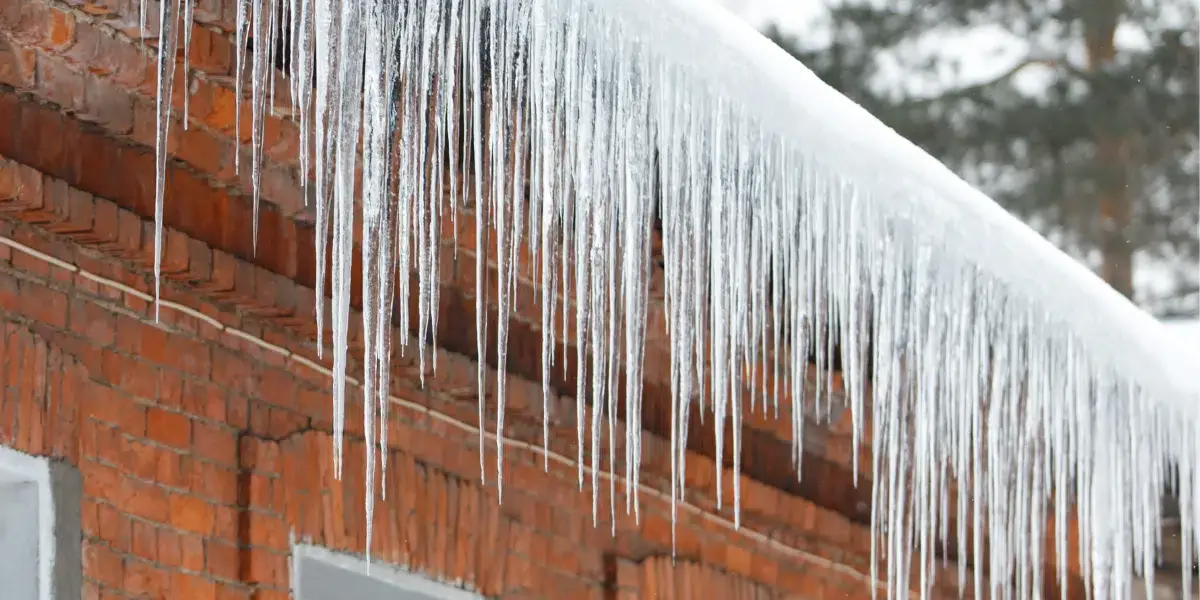What is Ice and Water Shield?
When ice at the bottom of a roof doesn’t melt, it can create a barrier, like an ice dam. When heat from inside the house helps the ice at the top of the roof melt, this water can become trapped in the “ice dam” and eventually leak into the house, causing damage to the roof.
To prevent this from happening, Ice and Water Shield (IWS) is installed - a waterproof membrane that keeps the water from infiltrating the roof.
Before installing IWS on a roof, you first need to know if that’s necessary and calculate the correct IWS size for each particular roof. However, that might not be as easy and straightforward as it sounds, since a lot of elements go into determining if IWS is necessary and how much of it will be needed.
What happens if you get it wrong?
The problem with getting your Ice and Water Shield measurements wrong is that it can lead to water damage to the roof in the long run. When the IWS is not the proper size, the ice dam can hold enough water that eventually goes over the shield and infiltrates the roof. That’s why there’s no one size fits all, as many factors play into how big the Ice and Water Shield should be.
Another big problem with IWS is determining the municipality with jurisdiction over the building, as they will be the ones to provide you with important information, such as if the area has a history of ice forming along the eaves causing a backup of water.
When do you actually need Ice and Water Shield?
A tricky part of IWS is determining whether you will need to install it on the roof or not. The International Residential Code (IRC) states that “In areas where there has been a history of ice forming along the eaves causing a backup of water… an ice barrier shall be installed”.
If that seems vague, it’s because it is. But that doesn’t mean it’s up to the roofer, adjuster or homeowner to tell if there’s history or not. The municipality with jurisdiction over the building is the one who should provide this information.
What goes into calculating Ice and Water Shield?
Now that you know how important it is to calculate your IWS correctly and if you really need it, let’s talk about some of the information you’ll need in order to effectively protect your roof.
Besides reaching out to the municipality to find out the requirements for IWS in the area of the building, you’ll need to gather some information about the roof you’re working on. While some of these measurements are standard, like the 24 inches distance from the inside interior wall, others must be measured accurately.
Once you have your roof size, roof pitch, eave length, valley length, soffit depth, stud size, and determine the material the building is made of, you can apply a mathematical formula to discover how far up you need to go on your roof with the Ice and Water Shield.
Sounds like a lot of work, doesn’t it? What if there was a way to calculate all of this, on top of having the municipality codes confirmed and data to back the numbers up? The good news: there is!
So, what’s the solution?
Many steps go into determining if you need to install Ice and Water Shield on your roof and how much of it. This process can take up a lot of your valuable time, but there’s an alternative solution: automation.OneClick Code offers the most complete Ice and Water Shield calculator on the market. And the best part? It’s free!
OneClick’s IWS Calculator takes all of the important details into consideration: what are the measurements of your roof? What material is the wall made out of? What jurisdiction is the building under? Once you input this information, the calculator will provide you not only with the correct information you need to install your IWS, but it will also provide you with actual written documentation to prove it.
Another great feature of this calculator is it allows you to round your results up to a half roll or a roll of IWS. Think of it like that: if you only need six slices of bread, you’ll still need to buy the whole loaf, right? That’s what happens with IWS. It doesn’t matter whether you’ll actually use the entire roll or not, you’ll still need to purchase it in full. That’s why this feature can also save you money, as it allows you to know how much IWS you will need and how much you will actually need to buy - and give you evidence to back it up.
 So, let’s get to work!
So, let’s get to work!


